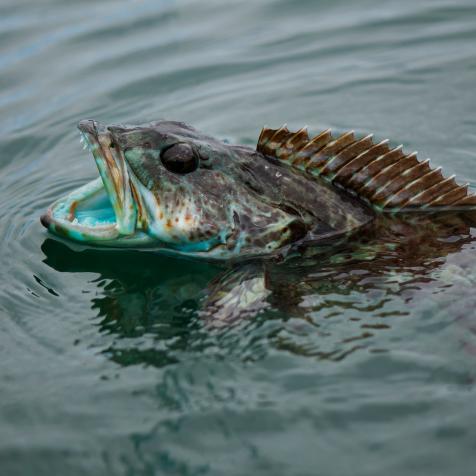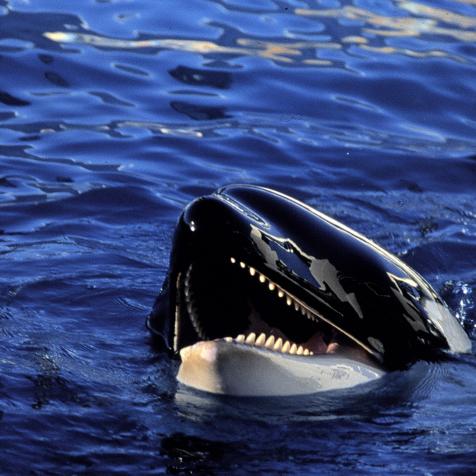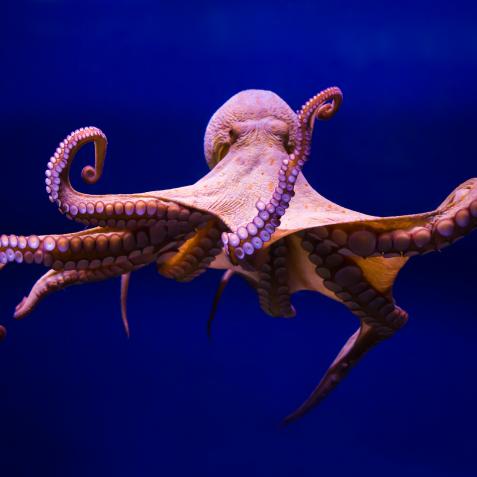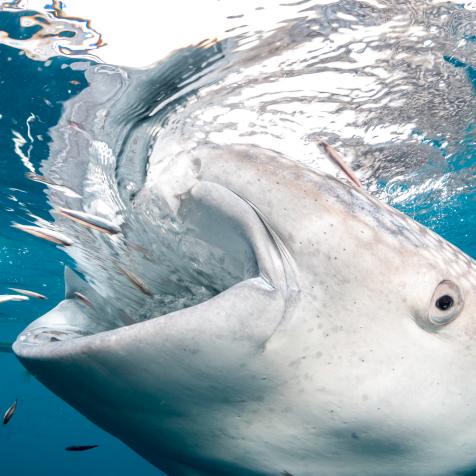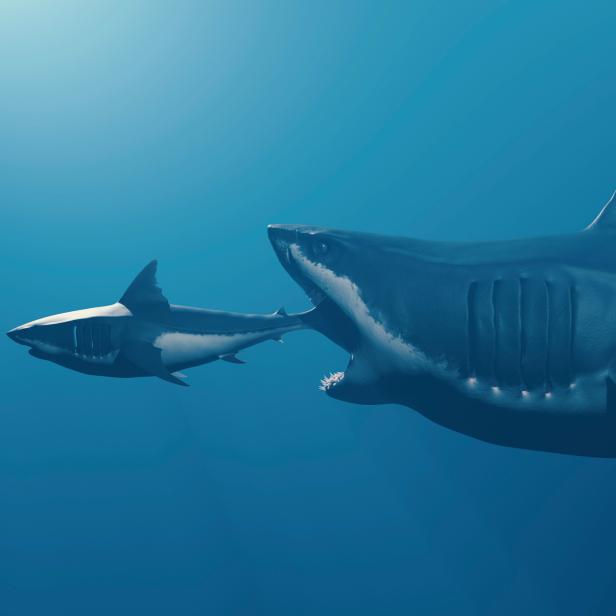
Baris-Ozer
The Highest Animal on the Food Chain: Megalodon Sharks
The now-extinct megalodon and its ancestors may have been "hyper apex predators," higher up on the food chain than any ocean animal ever known.
Megalodon, meaning “big tooth”, is a close relative of the great white shark that roamed the ocean more than three million years ago. Not only was the megalodon the largest shark to ever exist, but it was also one of the biggest fish ever. Megalodons were between 50-60 feet in length, three times the size of the largest great whites.
Paleontologist Dana Ehret likes to joke, “What did megalodon eat? …Well,” he says, “whatever it wanted.” These opportunistic hunters had a diet of whales, seals, sea cows, sea turtles, fish, and other sharks.
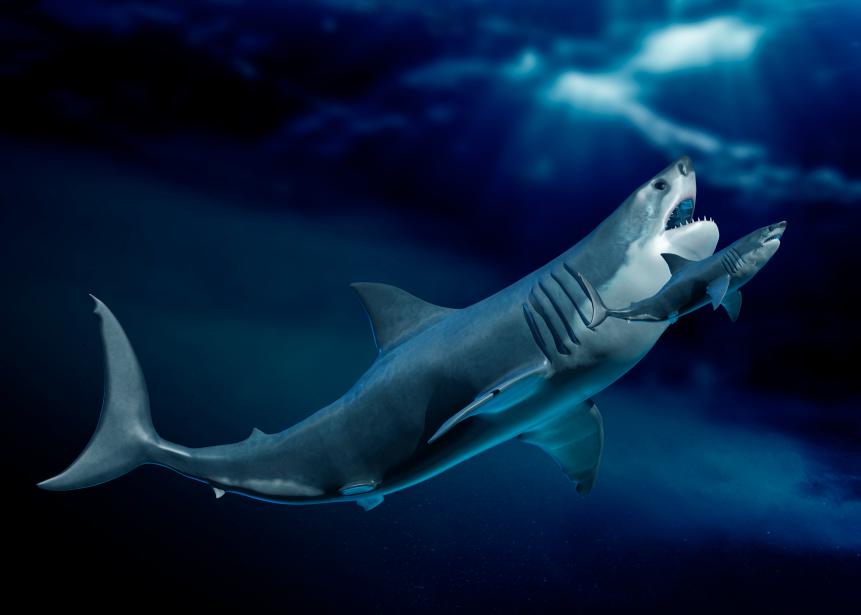
VICTOR HABBICK VISIONS/SCIENCE PHOTO LIBRARY
Megalodon compared with a shark underwater, illustration.
Recently, researchers used chemical measurements of fossilized megalodon teeth to compare their diet to that of other marine animals, from polar bears to ancient great whites. They discovered that megalodons and their direct ancestors were predators at a level never seen before in the animal kingdom.
Previously scientists believed that megalodons were at a similar level on the food chain to great whites. But this new study shows that megalodons were in a league of their own, likely two levels up the food chain above great whites. This means the megalodon would’ve eaten the creature that ate great whites. Scientists are now calling the megalodon a “hyper apex predator.”

Mark Kostich
Comparison photograph of a fossilized megalodon shark tooth vs. a modern great white shark tooth.
During the study, researchers examined dozens of fossilized teeth, analyzing their nitrogen isotopes. A predator absorbs these isotopes when it eats its prey. Megalodon and its direct ancestors, the megatooth sharks, showed nitrogen isotope excess at greater levels than any known marine animal.
The outcome is “eyebrow-raising,” says Robert Boessenecker, a paleontologist at the College of Charleston. “Even if megalodon was eating nothing but killer whales, it would still need to be getting some of this excess nitrogen from something else, and there’s just nothing else in the ocean today that has nitrogen isotopes that are that concentrated.”
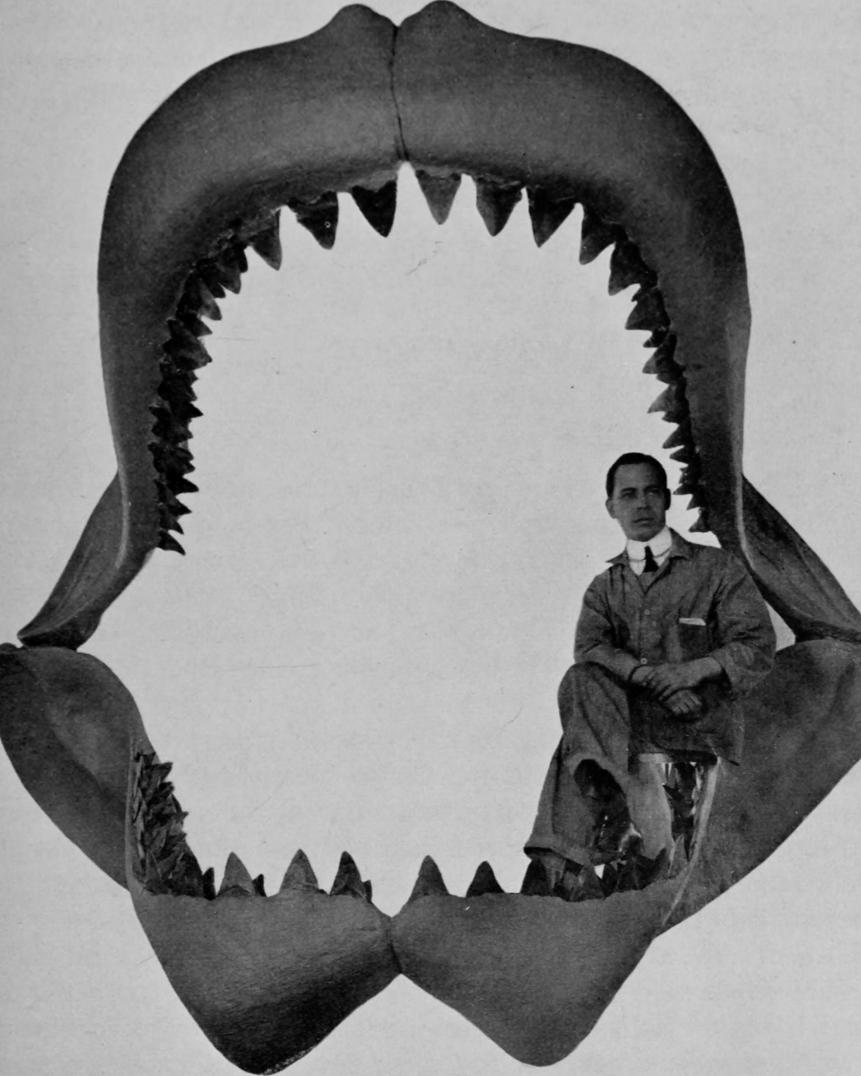
Smith Collection/Gado
Photograph of a man sitting in the jaws of Carcharodon Megalodon, from the book "Guide leaflet" by American Museum of Natural History, 1901.
“I don’t know how to explain it,” he continued.
There are theories. Megalodons may have eaten predatory sperm whales, a now extinct toothed species that hunted other whales. Or megalodons could have been cannibals.
Whether it was one of these theories or a combination, megalodons were some of the most feared sharks to ever rule the sea.











